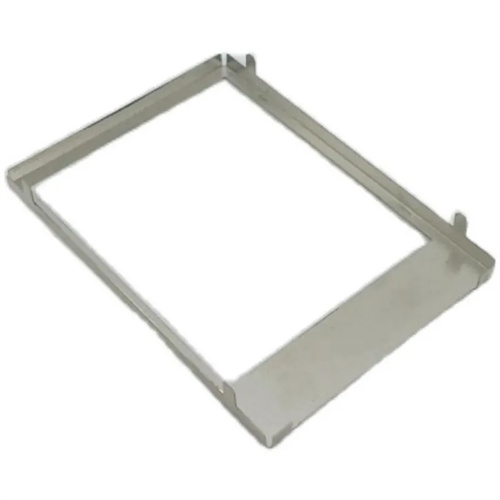Copper and copper alloy plates
Copper and copper alloy plates are made from a copper base with alloying elements such as zinc, tin, lead, and aluminum. Their excellent electrical and thermal conductivity, corrosion resistance, and processability make them crucial in the electronics, power generation, aerospace, and construction industries. Common materials include pure copper plates (T2 and T3), brass plates (H62 and H65), bronze plates (QSn6.5-0.1 and QAl9-4), and cupronickel plates (B10 and B30). Pure copper plates boast electrical conductivity exceeding 98% IACS, making them suitable for conductive components. Brass plates, with zinc as the primary alloying element, offer superior strength and wear resistance to pure copper and are more economical. Bronze plates, with additions such as tin and aluminum, possess excellent corrosion and wear resistance, making them suitable for heavy loads and corrosive environments. Cupronickel plates, with a nickel content of 10%-30%, offer excellent resistance to seawater corrosion, making them ideal for marine engineering. The thickness of the plates ranges from 0.2mm thin to 50mm thick, which can meet the processing needs of different scenarios.

The production process for copper and copper alloy plates requires selecting appropriate processing methods based on the material and performance requirements. These processes primarily include hot rolling, cold rolling, and annealing. For thicker plates (≥6mm), hot rolling is typically used: the ingot is heated to 700-900°C (depending on the alloy type) and thinned to the target thickness through multiple rolling passes. Each pass reduces the thickness by 15%-30% to ensure uniform internal structure. Cold rolling is used to produce thinner and high-precision plates. Through multiple rolling passes at room temperature, the plate thickness is controlled to within ±0.01mm, with a surface finish of Ra ≤ 0.8μm. An intermediate annealing treatment (300-600°C) is required during rolling to eliminate work hardening and restore the material’s plasticity. For plates with specialized performance requirements, such as oxygen-free copper, melting and rolling are performed under vacuum or inert gas to prevent oxygen intrusion, which can affect conductivity. After straightening and trimming, the finished plates undergo mechanical testing, nondestructive testing, and surface quality inspection to ensure compliance with applicable standards.

In the electronics and power sector, copper and copper alloy plates are core materials for conductive and heat-dissipating components. Generator and transformer windings and heat sinks utilize T2 pure copper plates, whose high conductivity reduces energy loss. One transformer manufacturer reduced equipment operating temperatures by 8°C after adopting 0.5mm thick pure copper plates. High-voltage switch contacts and conductive rods utilize H62 brass plates, which offer both conductivity and wear resistance, with a service life exceeding 100,000 cycles. In the semiconductor industry, wafer carriers utilize oxygen-free copper (OFC) plates with a surface roughness of Ra ≤ 0.05μm, ensuring a close fit between the chip and the carrier. This has resulted in a 15% increase in product yield for one chip manufacturer.

Aerospace and marine engineering have special requirements for the performance of copper and copper alloy plates. Aircraft engine cooling ducts utilize QAl9-4 aluminum-bronze plate, which maintains strength and corrosion resistance in high-temperature environments exceeding 300°C. This has enabled one airline to extend its engine maintenance interval to 2,000 flight hours. Ship propellers and seawater piping utilize B30 white copper plate, which exhibits excellent resistance to seawater corrosion. The use of this material in the seawater system of an ocean-going freighter has extended its service life to 15 years. Spacecraft thermal control systems utilize T3 pure copper plate as a heat sink. Its high thermal conductivity allows for rapid heat dissipation from the equipment, resulting in a 20% increase in the thermal control efficiency of a satellite.

With the development of high-end manufacturing, the performance of copper and copper alloy plates continues to improve, and their application scenarios continue to expand. Manufacturers have developed high-strength, high-conductivity copper alloy plates (such as Cu-Cr-Zr alloys) with tensile strength ≥500 MPa and conductivity ≥80% IACS, suitable for traction motors in high-speed trains. For 5G communication equipment, ultra-thin, high-precision copper plates (thickness less than 0.1 mm) have been developed for heat dissipation in radio frequency modules, reducing the size of one communications equipment manufacturer’s products by 30%. In the environmental protection field, lead-free brass plates (lead content ≤ 0.01%) are being promoted, complying with EU RoHS standards and expanding their application in drinking water pipes and food machinery. In the future, with the development of new energy, artificial intelligence, and other technologies, the demand for high-performance copper and copper alloy plates will continue to grow, driving the upgrading of production processes towards intelligent and green processes.
